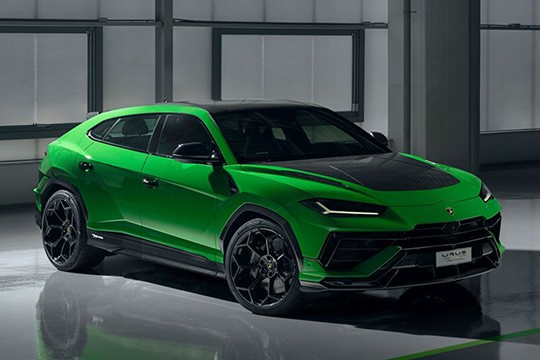LAMBORGHINI Urus Models/Series Timeline, Specifications & Photos
First production year: 2018
Engines: Gasoline
Body style: SUV (Sports Utility Vehicle)
Lamborghini had a long history of producing Performante versions for its supercars, but in 2022 it carried over that technology to its crossover Urus.
When the Italian carmaker introduced the Urus, the world was stunned. While it wasn't the first high-rider in its history, it was the first designed to storm the high-performance crossover market. When that was not enough for its customers, Lamborghini introduced an even fiercer version: the Performante.
Lamborghini's Performante vehicles sported modified exteriors when compared to their regular siblings, and so was the Urus. It featured a new, sharper-looking front bumper with distinctive side scoops and a trapezoidal-shaped lower air intake. The hood featured a black center area to reveal the carbon-fiber material used to make it. From its profile, the Urus Performante showed a lowered ground clearance by 20 mm (0.8") due to the new steel suspension. At the back, the spoiler sports carbon-fiber fins resembling those installed on the Aventador SVJ.
The cockpit's interior features Nero Cosmus black Alcantara as standard, along with the "Performante trim," a new hexagonal seat stitching pattern, and other choices, including leather upholstery. In addition, Ad Personam customization choices include matte carbon fiber accents, red door handles, and a personalized kickplate with the Ad Personam emblem. Both the inside aluminum trim and the black Alcantara/leather steering wheel are finished in matte black. The same finish can be extended to other interior features with the optional "Dark Package," including the lever on the Urus's central "TAMBURO," which houses controls like the start/stop button and drive mode selector.
On the Performante version, the twin-turbo V8 engine from the Urus gained just 16 hp, which, combined with the lowered weight by 50 kg (110 lbs), led to a lower 0-62 mph (0-100 kph) time, but the same top speed.
After selling more than 20,000 units of the Urus, the Italian automaker introduced an even more extreme version of the super SUV in the form of the Urus S.
The SUVs were no longer just those vehicles built for school runs and shopping. They became status icons, and the Urus was one of the most powerful of them. It represented the epitome of high-performance high-riders, on par with the most potent versions of vehicles offered by Porsche, Mercedes-AMG, and BMW X6 in the SUV segment.
Lamborghini made the Urus S with a distinct look that split it apart from the rest of the range. It sported a new front bumper that incorporated a stainless steel mate black painted skidplate. The redesigned hood was made from carbon fiber and featured a pair of vents on it, which were available in a few color options. From its sides, the super SUV revealed a set of 21” alloy wheels fitted as standard, with options for 22” or 23” alloys.
Inside, the Urus S was sporty and luxurious at the same time. Its flat-bottom steering wheel and the high-bolstered front bucket seats looked like they were carried over from a supercar. Yet, the automaker offered a choice of two leather-wrapped interiors, named Sportivo and the bi-colored Sophisticated.
Under the hood, the Urus S received a 16 hp (16.2 PS) increase in the total power output, reaching 666 PS (657 hp). As a result, it could reach the first 100 kph (62 mph) from a standstill in just 3.5 seconds, which was 0.1 seconds faster than on the model it replaced.
After a long hesitation, if the Lamborghini should launch an SUV or not, the Italian company introduced its contender in the Sport-SUV market: the Urus.
Back in the '80s, Lamborghini unveiled a very special car: the LM002. It was a weird project made by the Italian company and all 328 units were sold with a high sticker price. It was powered by a V12 Lamborghini Countach engine. It had a top speed limited to 200 kph (124 mph). Fast forward to December 2017 when the Urus was unveiled.
The angular look of the car resembled other supercars from the Lamborghini stable. Its big front bumper with a huge lower grille and air-intakes made the car look angry. From the side, the swept profile and the sloped rear end were designed in the classic, Lamborghini, look. The black overfenders on the wheel-arches inspired some off-road abilities.
Inside, the Urus was a clear member of its family. The rectangular shapes and the combination of carbon-fiber and aluminum elements resembled a jet-fighter cockpit. A big digital display was installed on the instrument cluster. The most important shape that contoured the car was the hexagon and that was visible in most of the details inside the car.
The Urus used the same platform as the Audi Q7/Q8, Bentley Bentayga, and Porsche Cayenne. Under the hood, there was a V8 turbocharged engine sent its power to the all four wheels via an 8-speed automatic transmission, and it featured a biased torque toward the rear wheels.


